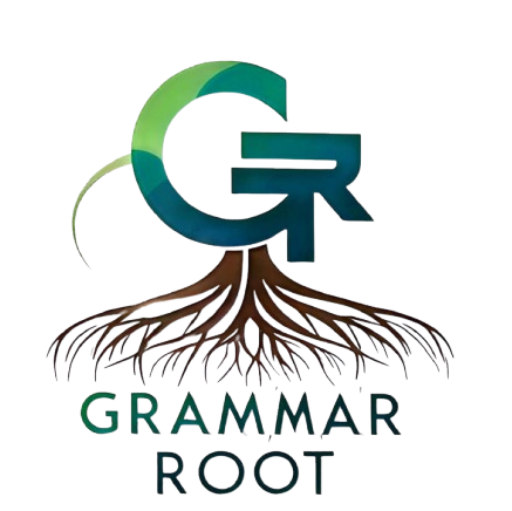Mastering the correct application of prepositional phrases such as “in which,” “of which,” “at which,” and many others is vital for achieving sentence cohesion, language sophistication, and formal writing structures.
These combinations, which merge prepositions with the relative pronoun “which,” are often used in academic, professional, and high-level formal writing to improve contextual clarity and referential precision.
Understanding how to use these phrases will help you avoid common English grammar mistakes and elevate your writing style by enhancing your grammatical relationships, improving your sentence structure, and increasing your overall English writing fluency.
🔍 Why These Prepositional Phrases Matter
In English grammar, combining prepositions with “which” enables more precise references. It strengthens the syntactic structure and clarifies relationships within a sentence—whether you’re referring to location, time, origin, or purpose.
These combinations often function as clause connectors, acting within relative clauses to define or describe something mentioned earlier. For instance:
“The project in which we participated was awarded first prize.”
Let’s break down the most commonly used “which” prepositional structures and how to apply them correctly.
🔹 ‘In Which’: Usage & Examples
“In which” indicates location, situation, or context.
📧 Email Example:
Hi Sandra,
I’ve attached the document in which we listed all project milestones and resource allocations.
Best,
Marcus
✅ Use it for:
- Documents
- Situations
- Events
🧠 Related Concepts:
Location, event-based reference, contextual clarity
🔹 ‘Of Which’: Usage & Examples
“Of which” typically shows possession or a part of something. It’s useful when you want to refer back to a noun and describe a component or detail related to it.
🏛 Museum Example:
“We visited a museum, the highlights of which included ancient Greek sculptures.”
📧 Project Email:
Dear Tom,
The final report, of which Chapter 3 focuses on budget allocation, has been shared with the board.
Regards,
Elena
✅ Use it for:
- Possession
- Subsections
- Specific content
🧠 Related Concepts:
Possessive prepositions, semantic accuracy, language precision
🔹 ‘At Which’: Usage & Examples
“At which” is mostly used for indicating time or place where something happens.
🕒 Meeting Example:
“There was a meeting at which all the department heads discussed the upcoming merger timeline.”
📧 Conference Context:
Hello David,
Don’t forget the panel discussion at which Professor Hill will speak on AI ethics in education.
Thanks,
Rachel
✅ Use it for:
- Time
- Events
- Specific points
🧠 Related Concepts:
Temporal references, event-based reference, time reference
🔹 ‘On Which’: Usage & Examples
“On which” refers to specific dates, topics, or surfaces.
🧾 Deadline Example:
“The deadline on which the project depends has been moved to Friday.”
📧 Team Document:
Hi Joanna,
Please review the spreadsheet on which we’ve detailed all supplier evaluations.
Cheers,
Leon
✅ Use it for:
- Dates
- Documents
- Tasks
🧠 Related Concepts:
Temporal references, writing precision in English
🔹 Other Prepositional Phrases with ‘Which’
Here’s a breakdown of other important combinations and their linguistic nuance:
| Phrase | Common Use Case | Example |
|---|---|---|
| from which | Origin | “The research center from which this data comes is world-renowned.” |
| under which | Conditions or policies | “The contract under which we operate has been revised.” |
| over which | Control or authority | “They debated the territory over which the conflict arose.” |
| within which | Enclosure/boundary reference | “A deadline within which we must submit the paper exists.” |
| through which | Means or process | “The portal through which clients access their reports is live.” |
| for which | Purpose or benefit | “This is the tool for which the budget was approved.” |
| before which | Time sequencing | “There was an orientation before which all members gathered.” |
| without which | Dependency | “It’s a clause without which the sentence lacks meaning.” |
| towards which | Directional expressions | “The policy towards which the union is working looks fair.” |
| by which | Means or agent | “The method by which they measure data is outdated.” |
| to which | Direction or recipient | “The form to which you’re referring is obsolete.” |
| about which | Topic or subject | “There’s a lot about which we need to speak.” |
These illustrate spatial relationships, directional usage, and grammatical relationships that guide sentence enhancement.
🧠 How These Fit into Grammar & Linguistic Structures
When you’re writing formal documents—say, an academic paper or a business proposal—these structures help you build precise, well-organized sentences. They also ensure syntactic clarity and reduce ambiguity, which is crucial for formal writing structures.
📚 Academic Example:
“The university submitted a proposal through which funding would be allocated to underserved departments.”
Here, “through which” clearly defines the method. Such precision shows advanced grammar usage and mastery of English prepositions.
🛠 Tips to Use These Phrases Effectively
Here are a few key grammar improvement tips to follow:
- Don’t dangle your prepositions. In formal writing, it’s better to say, “The course in which I enrolled” than “The course I enrolled in.”
- Check the antecedent. Make sure the noun before your clause clearly matches the “which” reference.
- Use them to connect ideas smoothly, enhancing the sentence cohesion of your paragraph.
🧩 Real-Life Scenarios
Scenario 1: University Report
“The committee reached a decision by which funding would be evenly distributed among departments.”
Scenario 2: Library Archive
“We accessed manuscripts of which several were handwritten in Latin.”
Scenario 3: Conference Recap Email
Hi Clara,
Thanks again for attending the conference at which our team presented the research framework. I’ve attached the slides about which many attendees had questions.
Best,
Michael
🧠 Wrap-Up: Why This Matters
By mastering the use of these preposition + which structures, you’re enhancing your ability to write with semantic accuracy, referential clarity, and language sophistication. You’re also avoiding common preposition errors and demonstrating a solid grasp of grammar & linguistic structures.
Whether you’re writing about a library, organizing a meeting, or describing a project, knowing how to use “in which,” “of which,” “at which,” and their peers correctly will refine your expression and solidify your place as a proficient communicator in English.

Johan is an professional & experienced blogger passionate about language and writing on Grammar root. He shares his expertise in grammar, punctuation, and effective communication, making complex rules simple and accessible for readers. With a knack for clear explanations and engaging content, Steel aims to help others master the art of language.

